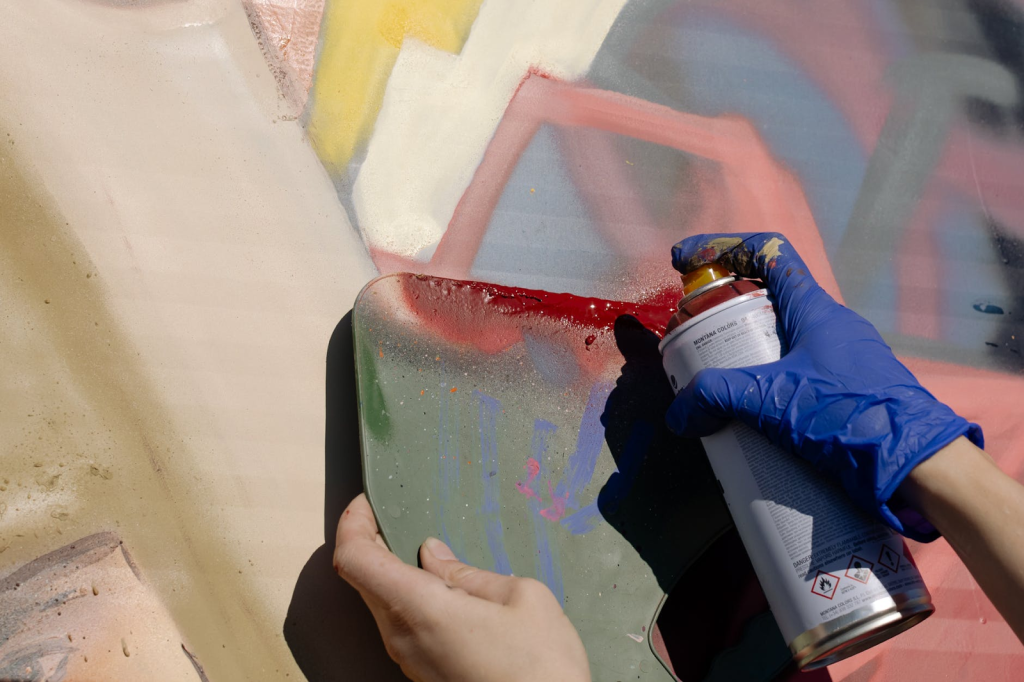Why Does Spray Paint Wrinkle?


The most common reason why spray paint wrinkles are when the paint is applied too generously. This allows the paint to dry too fairly rapidly on the surface but not underneath. Wrinkling is a hard, scrunched-up paint finish induced by an uncured paint coating producing dry skin. When you re-coat the paint, the chemicals in the paint contract, resulting in wrinkling. Another possibility is that the object has wax or debris that is unsuitable with the paint used. This post will explain what causes paint to wrinkle, what you need to and not to do to minimize it, and what you should be doing to rectify the issues.
What Are the Common Causes of Wrinkling?
A flawless sprayed-on paint finishing is the outcome of thorough and comprehensive preparation, thin layers of paint, and persistence. Whether any of the steps are hastened or the specified drying intervals are not maintained, the expected glassy flawless paint surface will most likely devolve into a damaged, smudgy, or crumpled mess. If this happens, the paint should be scraped, the object cleaned afterward, and the surface thoroughly restored. Read on and know more about the common causes of wrinkling when spray paint is used.
Exposure to High Heat
High heat can also cause wrinkles. Painting outside and in the scorching heat can also induce wrinkling. When the temperature is elevated, the paint’s base can crust over before the lower layers have time to cure.
Paint Coating Uncured
Wrinkling can also develop if a second coat is sprayed too hastily without providing sufficient time for the first layer to cure. The topmost layer solidifies and discourages the bottom coat from curing adequately. This is also true when a topcoat is sprayed before a prep coat has completely cured.
Contaminated Surface
What often causes spray paint to wrinkle is when the surface is contaminated by grease, wax, and other impurities too. These prevent the spray paint from adhering to the surface. It is suggested to follow the three-step preparation prior to having a non-porous surface spray painted. Water-soluble debris can be eliminated by cleaning solution and water. Oily contaminants can be cleaned with a wax and grease remover. After solvent cleaning, a thorough wiping down with isopropyl alcohol will eliminate any residual impurities.
Incompatible Products Used
Paint formulas differ from one paint line to the next. Some carriers are acrylic or water-based. Several paints are lacquer-based, while others use volatile epoxy solvents to accelerate them. These goods are contradictory. If a lacquer-based finish coat is applied over a conventional, quick-drying product, the lacquer transporters and driers will most likely dissolve the first coat, resulting in a wrinkled finish. When painting anything, ensure the primers, base coatings, and topcoats are all capable of interacting.
How to Prevent Spray Paint from Wrinkling?
Check that all components are compatible before applying primers and paints. Coatings from the same class are usually, but not generally, fully compliant. Using enamel with acrylic is generally not a wise decision. While the company’s technical data can help you with a selection of materials and dos and don’ts, the only way to know for sure if coats will perform in your application is to perform your own experimentation.
Considering waxes, oils, and impurities can compromise with paint adherence to the foundation, consistently implement the company’s recommendations for surface preparations when spraying primer. You can commence painting once the primer has fully dried. If you’re laboring on outdoor work, prevent painting while it’s particularly hot. In the middle of summer, paint that is exposed to direct sun can dry too rapidly. Paint can cure on the surface, leaving the bottom layer uncured. Painting must also be avoided whenever the temperatures are high.
How to Fix Wrinkled Paint?
Remove or wash the wrinkling coating off and sand the surface smooth to consolidate it into the surrounding coating to repair paint wrinkling. Ensure that the surface is totally clean. Prime unprotected surfaces as required with the suitable primer, allowing it to cure according to the manufacturer’s instructions. Reapply the paint according to the label’s spread rate and ambient considerations.
